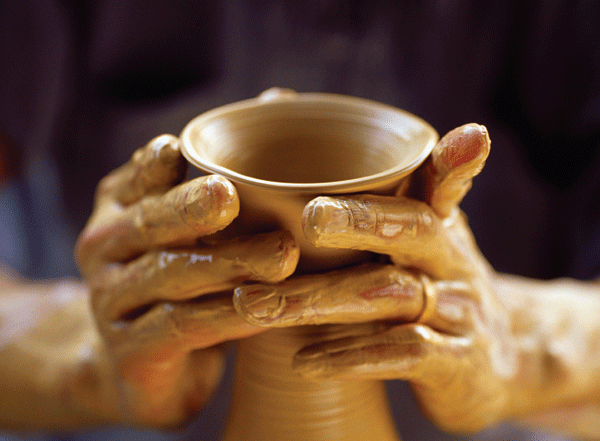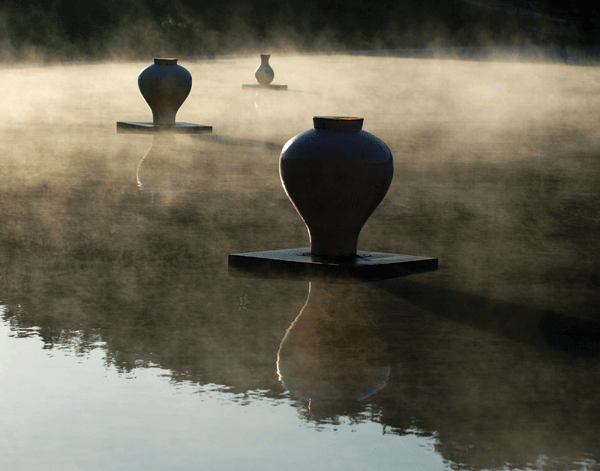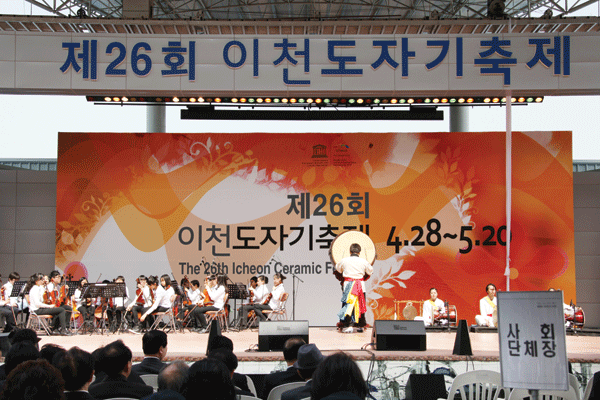LOCAL AUTONOMY
On the theme of 'You Love Ceramic, I Love Ceramic and We All Love Ceramic'27th Icheon Ceramic Festival to
open on Sept. 28-Oct. 20, 2013
The 27th Icheon Ceramic Festival will be held from Sept. 28 to Oct. 20, 2013 at Seolbong Park and Ceramic Village in Icheon City, Gyeonggi Province.
The annual festival, which will run under the theme, Neo-do Na-do, Uri-do,?will serve as an occasion where tradition meets modernity with displays of new products that bring beauty into our lives, and a number of hands-on activities. ‘Neo-do Na-do Uri-do' means “You Love Ceramic, I Love Ceramic and We All Love Ceramic” in Korean and Chinese characters.
Do (an ending with the meaning of 'too' or 'also' in Korean language) means 'ceramic' when used in Chinese character of '陶’

As usual, the forthcoming annual ceramic event will showcase a wide variety of ceramics ranging from contemporary Korean ceramics to old ones from differing parts of the nation as well as other countries offering what they described as Ceramics Interlocal Network under which ceramics of Icheon area can interact with those from other parts of the country and foreign nations.
Among the highlights of the Icheon festival this time are addition of cultural aspects of food, coffee and textile interacted with day to day urban life to the festival to give more fun to participating citizens , students and children.
The ceramics festival is also a popular event for foreign visitors to Korea as well as expatriates in Korea
That is why organizers of the festival this time have joined hands with business partners from food and beverage makers in making the festival consumer friendly in a departure from the past when the event was too much focused on history and culture of Icheon areas renown for its 1,000 years of ceramic history background.
Until recently, the festival was planned and organized by the municipality and other organizations under its umbrella .

Starting this year, however, Icheon municipality has delegated important decision-making procedures and other important works associated with the organization of the event to civilian organizations such as the Icheon Ceramics Cooperatives and curators .
Icheon is a city in Gyeonggi Province which should not be confused with the much larger Incheon Metropolitan City.
Its neighboring districts include Yeoju County, Gwangju City, Yongin City, and Anseong City in the same province,
Together with Yeoju, Icheon is known as a center of South Korean ceramic manufacture. Other famous local products include peaches and rice.
Icheon Ceramics Village produces traditional Korean ceramics, which are of high quality.

The village became the center of traditional pottery during the Joseon Dynasty (1392-1910) for about 500 years due to the easily obtainable materials in the areas. Icheon Ceramics Village was also the center of Joseon Baekja ceramics.
"Buncheong" ware, a form of traditional pottery marked by decorative designs and elaborate carvings,e emerged in the early Joseon Kingdom (1392-1910), replacing celadon that had been in common use. Buncheong largely disappeared from Korea after the 16th century due to the popularity of white porcelains.
In modern times, the buncheong style has been revived here by new generation of potters after the Korean War (1950-1953).
Celadon, or cheongja, and white porcelain, baekja, came from ancient Chinese dynasties. But buncheong is form that originated from Korea,.
The ceramic-related activity is concentrated in the Icheon Ceramics Village. The village is home to around 80 ceramics production facilities and shops, with an estimated 300 active kilns, some of which are of the traditional wood-burning style.
Japanese people are fond of Korean pottery. There is a Korean influence in Japan's tea-drinking culture, like some of their tea ware that originally came from Korea.

The Icheon Ceramics Festival, which features cultural performances and hands-on pottery-making opportunities, takes place every year, but there are activities all-year-round for tourists. Icheon also has many stores where visitors can purchase ceramic items. The vases and other objects that are produced by the village’s top artists - some of who are designated national treasures - are very pricy. But many household and decorative items, including tableware, tea sets, mugs are useful and reasonably priced.
Buses run to Icheon approximately every 30 minutes throughout the day from Seoul’s Gangnam Express Bus Terminal. The journey takes around an hour. The ceramics village is a short cab ride from Icheon’s downtown bus terminal.
Presently, about 80 pottery factories are congregated at the village, and about 300 pottery kilns are in use.
Visitors to the Icheon Ceramic Festival 2013 will be able to observe the pottery production process, and purchase them directly.
It is worthwhile to see the crafts of these potters known as Living Cultural Treasures of Korea for creating the highest quality handicrafts. Not only are the traditional Cheongja, Baekja, and Buncheong pottery produced here, but you can also view modern design pottery. The Haegang Ceramics Art Center is the only ceramics Art Center in Korea, where you can learn about ceramics. One of the must-see events at Icheon Ceramics Village is the internationally famous “Icheon Ceramics Festival” held every year. Displayed pottery as well as, pottery classes, traditional kiln handling, pottery character show, and even parades are held.

The Yeongdong Expressway and Jungbu Naeryuk Expressway pass through Icheon.
The special event dubbed as “Tasteful Dishes & Tasty Dishes” will also be held during the festival offering a wide variety of food products when Korea has entered into what they described as “Five million single household era.”
Gearing up for growing number of single family households , specially made food and beverage products for single family households will likely attract attention from participating citizens during the festival..
A seminar on “Upcycling Production System of Ceramics” is also scheduled for October 14, 2013 with the participation of academicians and ceramic experts from Korea, Japan and other countries.
Professor Matsui Toshio of Kyoto Formative Art College will speak on upcyling production system of ceramics - the process of converting waste materials or useless products into new materials or products of better quality or for better environmental value.
Upcycling is nothing new, of course, people have always mended things, sanded and repainted things, taken a bit of this and put it on that. But all this common sense activity didn't have a name and those handy types tended to do it for themselves or for family and friends, according to experts.
Now upcycling is cool, it's trendy, it's laudable and it's everywhere. Online businesses selling the revamped preloved are proliferating around the world and the quality of goods on sale is anything but tinpot. No, creativity is high, as is the quality of workmanship.
More than 200 years ago, Koreans used to upcycle pieces of wooden materials from old houses or discarded earthenware, according to historical records. k

